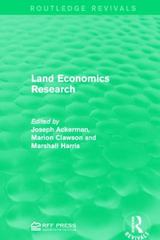Question
ECO 364: International Trade Practice solving versions of the exchange economy and Ricardian models to see where the gains from trade come from. There are
ECO 364: International Trade
Practice solving versions of the exchange economy and Ricardian models to see where the gains from trade come from.
There are two countries, Home (H ) and Foreign (F ), and two sectors, 1 and 2. Households in each country have identical preferences over consumption of goods from both sectors, which are described by a Cobb-Douglas utility function:
Uc = U (C1c, C2c) = (C1c)s (C2c)1s
where Uc denotes utility in country c and Cic denotes consumption of good i in country c. The parameter s (0, 1) measures how much households like good 1 relative to good 2.
In what follows, we will assume that the preference parameter is given by: s = 1/3
which implies that households like good 2 more than good 1. We will also begin by assuming that the supply of good i in country c, denoted by Xic, is fixed, with endowments given by:
X 1H = 1 , X 1F = 2 ,
X 2H = 2 X 2F = 8
Demand
First, we will solve for demand in each country taking as given the relative price of good 1 to good 2, pr p1/p2. (In other words, your answers below will be functions of pr.) Suppose that households choose consumption to maximize utility, taking goods prices and income as given. Suppose also that all endowments in each country are owned by households.
(a) What is consumption of each good in each country, Cic, given pr? Closed economy
Now suppose that both Home and Foreign are in autarky and hence cannot trade with each other. Market clearing then requires that consumption of each good in each country must be equal to the respective endowment.
- (b)What must the autarky relative price of good 1 to good 2, pcr pc1/pc2, be in each country c so that markets clear for both goods? Which country has a higher autarky relative price? Why?
- (c)In each country under autarky, what is the value of consumption of each good and the corresponding value of household utility?
Open economy
Now suppose that Home and Foreign open to trade with each other. This means that instead of facing their respective autarky goods prices, they can now buy and sell goods at world prices pW1 and pW2 , with pWr pW1 /pW2 denoting the world relative price.
- (d)Which country has a comparative advantage in which good? Which good will each country export? Which good will each country import?
- (e)What are exports of each good by each country, Ec = Xc Cc, given the world relative iii
- price pWr ? (Note that Eic > 0 indicates that country c exports good i, whereas Eic < 0 indicates that country c imports good i.)
Under trade, market clearing for each good requires that world demand equals world supply. Equivalently, this requires that exports of a good by one country equal imports of the good by the other country. Hence, the market clearing condition for good i {1, 2} is:
E iH + E iF = 0 2
- (f)What must the world relative price pWr be so that world market clearing is satisfied for both goods? How does pWr compare to the autarky prices in Home and Foreign, pHr and pFr ?
- (g)In each country under trade, what is the value of consumption of each good and the corresponding value of household utility? Which country is better off under trade compared to autarky?
Introducing production
Now, suppose that instead of having fixed endowments in each country, goods have to be produced by workers. The marginal product of labor in sector i {1,2} in country c {H, F } is denoted by aci , with values given by:
a H1 = 3 , a H2 = 3 a F1 = 1 , a F2 = 2
The total labor endowment in country c is denoted by Lc, with values given by: LH =1, LF =5
Suppose that all goods are produced under perfect competition. Preferences remain the same as before.
- (h)What is the autarky relative price of good 1 to good 2 in each country? Which country has a higher autarky relative price? Why?
- (i)In each country under autarky, what is the value of consumption of each good and the corresponding value of household utility?
Now suppose that Home and Foreign open to trade with each other. Assume that there is complete specialization under trade, with each country producing only one good.
- (j)Which country will specialize in the production of which good? Why? What is the world supply of each good?
- (k)What is the wage level wc in each country c given world prices pW1 , pW2 ?
- (l)What is the value of consumption of each good in each country given world prices pW1 , p W2 ?
3
(m) How much of each good do Home and Foreign import or export given world prices pW1 , p W2 ?
(n) What must the world relative price pWr be so that world markets for each good clear?
(o) What is the value of household utility in each country? Which country gains or loses from trade?
4
Step by Step Solution
There are 3 Steps involved in it
Step: 1

Get Instant Access to Expert-Tailored Solutions
See step-by-step solutions with expert insights and AI powered tools for academic success
Step: 2

Step: 3

Ace Your Homework with AI
Get the answers you need in no time with our AI-driven, step-by-step assistance
Get Started


